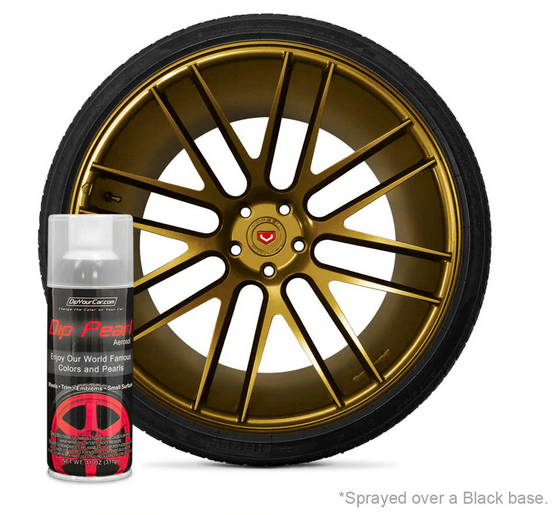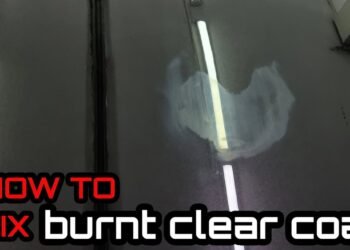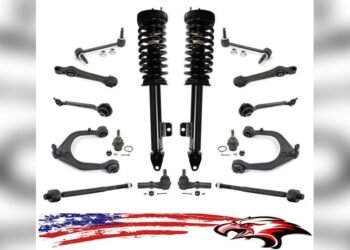If you’ve ever used Plasti Dip to customize your ride or protect surfaces, you know how versatile and fun it can be. But what about keeping that finish looking fresh and shiny?
That’s where waxing over Plasti Dip comes into play. You might wonder if it’s even possible or if waxing could damage the rubberized coating. The good news is, with the right approach, waxing your Plasti Dip can boost its shine, protect it from the elements, and extend its lifespan.
You’ll discover exactly how to wax over Plasti Dip safely, what products work best, and tips to make your finish pop like new. Ready to take your Plasti Dip game to the next level? Let’s dive in!

Credit: www.reddit.com
Benefits Of Waxing Plasti Dip
Waxing Plasti Dip adds several advantages that improve its look and lifespan. This simple step keeps your dipped surfaces fresh and protected. Wax forms a barrier that helps maintain the dip’s original quality. It also makes the surface easier to clean and maintain over time.
Enhancing Shine And Gloss
Waxing brings a bright shine to Plasti Dip finishes. It changes dull or matte surfaces into glossy ones. The wax smooths the surface, reflecting more light. This effect makes colors appear richer and more vibrant. A shiny finish also gives a cleaner, polished look that stands out.
Protecting Against Fading
Sunlight can cause Plasti Dip to fade or lose color. Wax creates a shield that blocks harmful UV rays. This protection slows down the fading process. It keeps the color looking fresh for a longer time. Regular waxing helps preserve the original shade and vibrancy.
Improving Durability
Wax adds a strong layer of defense over the Plasti Dip. It guards against dirt, dust, and water damage. This layer reduces wear and tear from daily use. Wax also prevents minor scratches and scuffs from ruining the surface. Overall, waxing helps Plasti Dip last longer and stay tougher.

Credit: evannex.com
Choosing The Right Wax
Choosing the right wax for your Plasti Dip finish is essential. Wax helps protect the surface and enhances the shine. The wrong wax can damage the dip or reduce its lifespan. It is important to select waxes that work well with the rubberized texture of Plasti Dip. This guide explains the types of wax to use, ingredients to avoid, and some recommended products.
Types Of Wax Suitable For Plasti Dip
Carnauba wax is a popular choice for Plasti Dip. It provides a natural shine and good protection. Synthetic waxes also work well and often last longer. Spray waxes made for rubber surfaces are easy to apply and safe. Avoid abrasive waxes or those with harsh chemicals. These can break down the Plasti Dip coating over time.
Avoiding Harmful Ingredients
Steer clear of waxes that contain solvents or strong cleaners. These ingredients may dissolve the Plasti Dip layer. Petroleum-based products can soften or weaken the coating. Avoid waxes with silicone or harsh abrasives. Such components can cause peeling or reduce the dip’s flexibility. Always read labels carefully before applying wax.
Recommended Products
Turtle Wax Ice Spray Wax is gentle and safe for Plasti Dip. It cleans and shines without harming the surface. Meguiar’s Synthetic Wax is another good option. It offers long-lasting protection and a smooth finish. For a natural choice, try a carnauba-based paste wax made for plastics. These products maintain the dip’s appearance and durability well.
Preparation Before Waxing
Proper preparation is key before waxing over Plasti Dip. It ensures the wax adheres well and protects the surface. Taking time to prepare helps achieve a smooth, lasting finish.
Cleaning The Surface
Start by removing dirt and dust. Use a mild soap and water solution. Avoid harsh chemicals that can damage the Plasti Dip. Gently scrub the surface with a soft cloth or sponge. Rinse thoroughly to remove all soap residue.
Drying Techniques
Dry the surface completely before waxing. Use a clean microfiber towel to absorb moisture. Avoid air drying to prevent water spots. Make sure no water remains in crevices or edges.
Inspecting For Damage
Check the Plasti Dip for cracks or peeling areas. Small flaws can affect wax adhesion. Repair any damage before waxing. This step helps maintain the protective layer and appearance.

Credit: speed.academy
Waxing Techniques For Best Results
Waxing over Plasti Dip enhances its look and protects the surface. Proper waxing makes the dip shine and last longer. Using the right techniques ensures smooth, even coverage and a glossy finish. Follow these simple steps for best results.
Applying Wax Evenly
Start with a clean, dry Plasti Dip surface. Use a small amount of wax on a soft applicator pad. Spread the wax in thin, even layers. Move in circular motions to cover every part. Avoid heavy layers to prevent streaks or buildup. Let the wax dry to a haze before buffing.
Buffing For Maximum Shine
Use a clean microfiber cloth for buffing. Apply gentle pressure and move in circular motions. Buff until the haze disappears and the surface shines. Take time to reach all edges and corners. Buffing activates the wax and enhances the gloss. Repeat waxing and buffing for deeper shine.
Tools And Materials
Choose wax designed for rubberized coatings or Plasti Dip. Use soft foam applicator pads for smooth application. Microfiber cloths work best for buffing and polishing. Keep all tools clean to avoid scratching the surface. Avoid harsh chemicals that can damage Plasti Dip. Prepare all materials before starting to work efficiently.
Maintaining Waxed Plasti Dip
Maintaining waxed Plasti Dip keeps the finish fresh and durable. Wax adds a protective layer that enhances shine and longevity. Proper care helps avoid damage and fading. Simple steps ensure your Plasti Dip looks great for longer.
Regular Cleaning Tips
Clean waxed Plasti Dip gently with mild soap and water. Use a soft cloth or sponge to avoid scratches. Rinse thoroughly to remove all soap residue. Dry the surface with a microfiber towel to prevent water spots. Avoid harsh chemicals and abrasive brushes that can harm the wax layer.
Reapplying Wax Schedule
Reapply wax every 4 to 6 weeks for best protection. Check the surface for dullness or water beading to decide when to wax. Use wax designed for rubberized coatings or Plasti Dip specifically. Apply a thin, even layer and buff gently for a smooth finish. Regular waxing keeps the coating sealed and resistant to dirt and moisture.
Avoiding Common Mistakes
Do not wax Plasti Dip before it is fully cured, usually 24 to 48 hours. Avoid using car waxes with harsh solvents that can damage the rubber coating. Never apply wax on a dirty or oily surface. Skip automatic car washes with brushes that can peel or scratch the dip. Always test wax on a small area first to check compatibility.
Troubleshooting Common Issues
Troubleshooting common issues with waxing over Plasti Dip helps maintain its look and durability. Waxing can enhance shine but may cause some problems. Understanding how to fix these issues keeps your Plasti Dip smooth and glossy.
Removing Wax Residue
Wax residue can leave a dull or sticky finish on Plasti Dip. Use a clean microfiber cloth to buff the surface gently. If residue stays, apply a small amount of mild soap with water and rub lightly. Avoid harsh chemicals that can damage the Plasti Dip layer. Rinse with clean water and dry fully for best results.
Dealing With Uneven Shine
Uneven shine occurs when wax is applied too thick or unevenly. Apply wax in thin, even layers using a soft applicator pad. Let each layer dry before adding the next. Buff the surface with a clean cloth to even out the shine. Repeat the process lightly if needed. This method creates a smooth, consistent gloss.
Fixing Surface Imperfections
Surface imperfections like bubbles or dust can appear after waxing. Remove dust with a soft brush before waxing. For bubbles, lightly sand the area with fine-grit sandpaper once the wax is dry. Clean the surface and reapply wax carefully. Work slowly and gently to avoid further damage. Proper preparation prevents many imperfections.
Frequently Asked Questions
How To Make Plasti Dip Look Glossy?
Apply Plasti Dip Glossifier spray evenly over the dried dip. Let it dry to achieve a glossy, polished finish. Waxing with Turtle Wax Ice also enhances shine.
What Dissolves Plasti Dip?
Plasti Dip dissolves with products like Goo Gone, WD-40, gasoline, kerosene, and dip dissolvers. Use microfiber towels and pressure washers to remove softened residue safely. Always work in a well-ventilated area and test solvents on a small surface first to prevent damage.
Why Is Plasti Dip Illegal?
Plasti Dip is illegal in some areas due to harmful VOC emissions and safety regulations. Its use may violate environmental laws.
How To Protect Plasti Dip?
Protect Plasti Dip by applying a quality glossifier or wax specifically made for it. Avoid harsh chemicals and clean gently with mild soap and water. Use Turtle Wax Ice or similar spray wax for added protection and shine. Regular maintenance keeps Plasti Dip durable and vibrant.
Can I Wax Plasti Dip To Improve Its Shine?
Yes, waxing Plasti Dip can add a subtle shine and enhance its appearance temporarily.
Conclusion
Waxing over Plasti Dip helps protect its finish and keeps it looking fresh. It adds a smooth, shiny layer without harming the dip. Regular waxing can extend the life of your Plasti Dip coating. Always use wax made for rubberized surfaces for best results.
This simple step enhances both appearance and durability. Try waxing to keep your Plasti Dip clean and glossy longer.

















